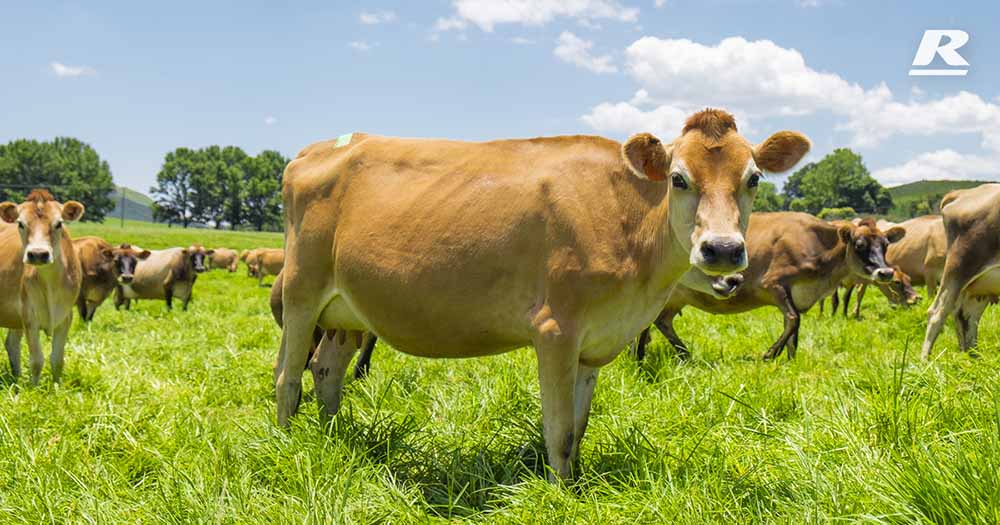What is Grass Tetany?
Grass tetany, also known as hypomagnesaemia, is caused by a deficiency of magnesium where the animals intake or absorption rate is lower than the animals requirements. The majority of magnesium is stored in the animal’s skeleton which cannot be mobilised quickly and therefore is often inadequate to meet daily requirements. Normal concentrations of magnesium is nearly totally dependent on the absorption of dietary magnesium which occurs through the rumen wall in adult cattle.
What are the causes of Grass Tetany?
There are multiple factors which may result in an increased risk of grass tetany. As the absorption of dietary magnesium occurs through the rumen wall, a low fibre diet results in a quicker rate of passage and therefore less change of magnesium absorption from the food they’re consumed. Lush pastures are naturally higher in potassium and lower in magnesium creating a high risk for the cattle that graze them. In addition, cattle grazing pastures which have had potassium or nitrogen fertilisers applied are also at risk as magnesium absorption is even lower than normal.
As older cattle metabolise magnesium from bones more slowly, they are higher at risk of hypomagnesaemia as are cows in the early weeks of lactation. Weeks one to three of lactation are at most risk as magnesium from the blood is used for milk production. This creates a higher risk again if these animals are grazing pastures.
A situation where grazing time is reduced such as a sudden change of pasture or bad weather also may result in an outbreak of grass tetany.
Symptoms
The symptoms of cattle that are experiencing a magnesium deficiency can range from acute, subacute and chronic forms. These signs include the following:
- Depressed milk production
- Unusual alertness
- Aggression
- Muscle twitching
- Convulsions
- Sudden death
Prevention and Treatment Methods
If grass tetany is observed in one cow, action should be taken to increase magnesium of the herd intake to prevent further risk. Supplementing magnesium to try and mitigate the risk of grass tetany can be achieved by:
- Magnesium or 4-in-1 drenches
- Dusting pastures or hay
- Magnesium lick blocks
- Adding magnesium to water troughs
- Magnesium bullets or boluses
- Additional magnesium to the grain component of the diet
It is also a good idea to undertake soil tests to correct any phosphorus deficiencies and review pasture/fertiliser management.
The aim of treatment for grass tetany is to increase the levels of blood magnesium as quickly as possible. This can be achieved by the use of magnesium and/or 4-in-1 pouches injected under the skin, or directly into the jugular vein by a vet. Leave the animal in a quiet environment to recover after treatment.
What can REID do for Grass Tetany?
To assist with the management of magnesium daily intake, REID Stockfeeds can customise a grain/pellet ration to suit your individual needs. This may include:
- The addition of Mag Oxide and/or Mag Sulfate
- Increase rumen buffers
- Yeasts and yeast by-products to increase digestive efficiency
- Control Calcium, Phosphorus, Potassium and Sodium balance in the diet
- Inclusion of slower fermenting starch sources
- Grain processing method and particle size
To find out more about the best animal feed or health management strategy for your herd, give us a call and have a chat to one of our nutritionist on 1300 REID FEED or enquire here >
 Author
Author
Christine Harris
Sales & Nutrition Account Manager

 Author
Author